Mobile Phone Sensors Definition and Type
Mobile phone sensors are hardware components integrated into smartphones and other mobile devices to gather information from the device's physical environment. These sensors provide data to various apps and services, enabling a wide range of functionalities and user experiences.
In the world of technology and information, sensors play a pivotal role as fundamental tools for data collection and automation. These devices come in various types and are used across countless applications, from everyday gadgets like smartphones to industrial machinery and environmental monitoring systems. Sensors provide the means to interact with and understand the physical world by converting real-world phenomena into measurable data.
The advantages of sensors include their ability to facilitate data-driven decision-making, enhance precision, automate tasks, and improve safety. They have enabled remarkable advancements in fields such as healthcare, transportation, manufacturing, and environmental science. Sensors are also integral to the development of smart devices and the Internet of Things (IoT), where interconnected sensors gather data for improved convenience and efficiency.
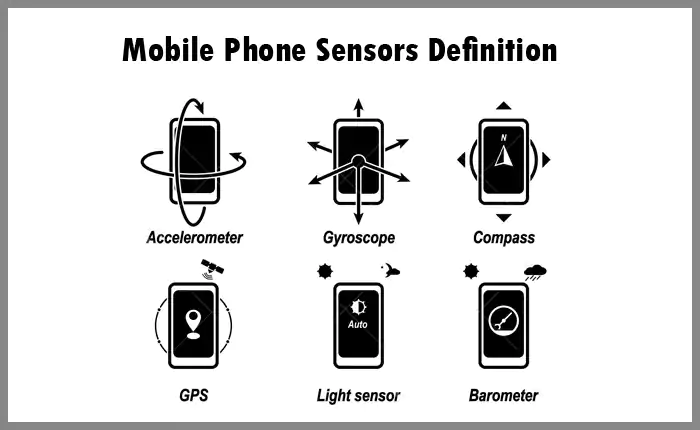
Mobile Phone Sensor Type
Here are some common mobile phone sensors and their definitions:
1. Accelerometer:
An accelerometer measures the acceleration and orientation changes of the device in three dimensions (X, Y, and Z axes). It is commonly used for screen rotation, tilt-based gaming, and detecting device movement.
Advantages:
♦Enables screen orientation changes and tilt-based gaming.
♦Provides basic motion sensing capabilities.
Disadvantages:
♦Limited precision for complex motion tracking.
♦May not perform well in extreme conditions.
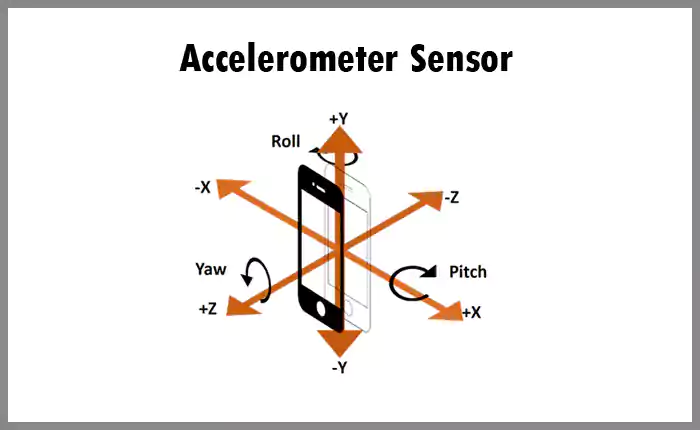
2. Gyroscope:
A gyroscope measures angular velocity and rotation around the three axes. It is used for more precise orientation and motion sensing in applications like augmented reality and gaming.
Advantages:
♦Offers precise orientation and motion sensing.
♦Essential for augmented reality and more immersive gaming.
Disadvantages:
♦Consumes more power than accelerometers.
♦Can be sensitive to minor movements, leading to potential drift over time.
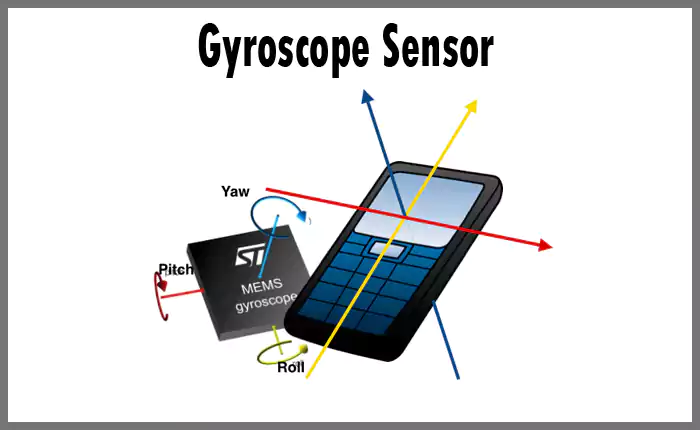
3. Magnetometer (Compass):
This sensor detects the magnetic field's strength and direction, allowing the device to determine its orientation relative to the Earth's magnetic poles. It is used for compass apps and map orientation.
Advantages:
♦Provides accurate direction and orientation information.
♦Essential for compass apps and navigation.
Disadvantages:
♦Susceptible to interference from nearby magnetic objects.
♦Requires calibration for accurate results.
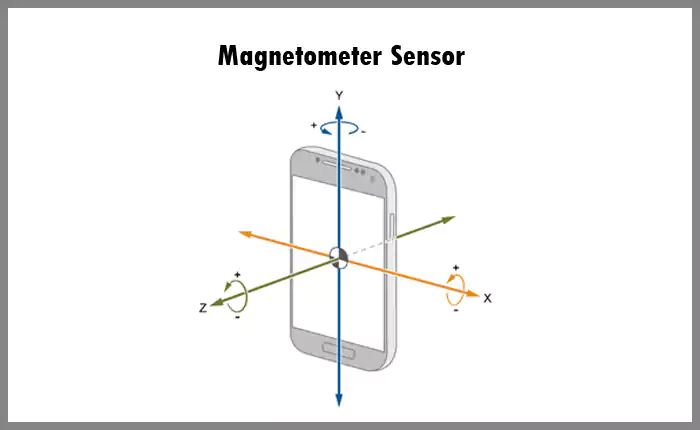
4. Proximity Sensor:
The proximity sensor detects how close an object (typically the user's face during a call) is to the phone's screen. It is used to turn off the screen during calls to prevent accidental touch inputs.
Advantages:
♦Helps conserve battery by turning off the screen during calls.
♦Prevents accidental touch inputs during calls.
Disadvantages:
♦Limited to proximity detection and cannot provide additional data.
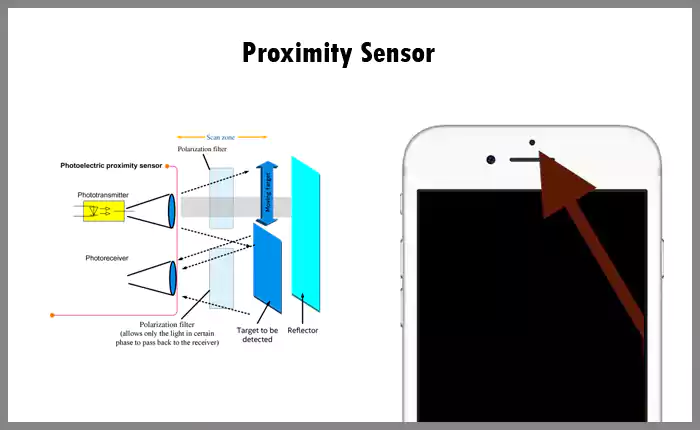
5. Ambient Light Sensor:
This sensor measures the ambient light levels around the device. It automatically adjusts the screen brightness to save power and improve visibility in different lighting conditions.
Advantages:
♦Automatically adjusts screen brightness for better visibility and power savings.
♦Enhances user experience in different lighting conditions.
Disadvantages:
♦Limited functionality beyond adjusting screen brightness.
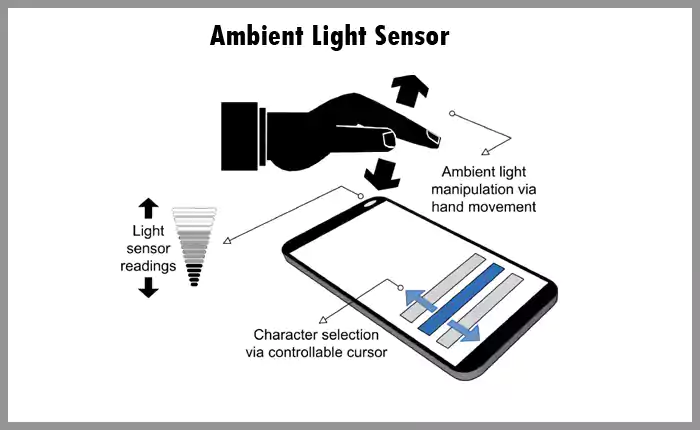
6. GPS (Global Positioning System):
Though not strictly a sensor, GPS allows the device to determine its precise location on Earth. It is used for navigation, location-based services, and mapping applications.
Advantages:
♦Provides accurate location data for navigation and location-based services.
♦Essential for various apps like maps, weather, and ride-sharing.
Disadvantages:
♦Drains battery quickly when actively used for extended periods.
♦May not work well indoors or in areas with poor satellite reception.
.webp)
7. Barometer:
Barometers measure atmospheric pressure. When combined with other sensors, such as GPS, they can provide altitude information, which is useful for apps related to weather forecasting, hiking, and aviation.Advantages
♦Altitude Measurement
♦Weather Forecasting
♦Improved Location Accuracy
Disadvantages
♦Limited Use Cases
♦Calibration Required
♦Power Consumption
♦Sensor Cost

8. IR Blaster (Infrared Transmitter):
Some smartphones are equipped with an IR blaster that emits infrared signals to control various electronic devices like TVs, air conditioners, and home theater systems.
Advantages:
♦Allows the phone to control various home appliances and electronics.
♦Enhances device versatility.
Disadvantages:
♦Limited compatibility with newer appliances that use RF or Wi-Fi control.
-Sensor.webp)
9. Fingerprint Sensor (Biometric):
Fingerprint sensors capture and authenticate a user's fingerprint to unlock the device, authorize payments, or secure sensitive information.
Advantages:
♦Offers secure and convenient device unlocking.
♦Can be used for secure app access and mobile payments.
Disadvantages:
♦Vulnerable to fingerprint spoofing in some cases.
♦Requires dedicated hardware, which may increase device costs.
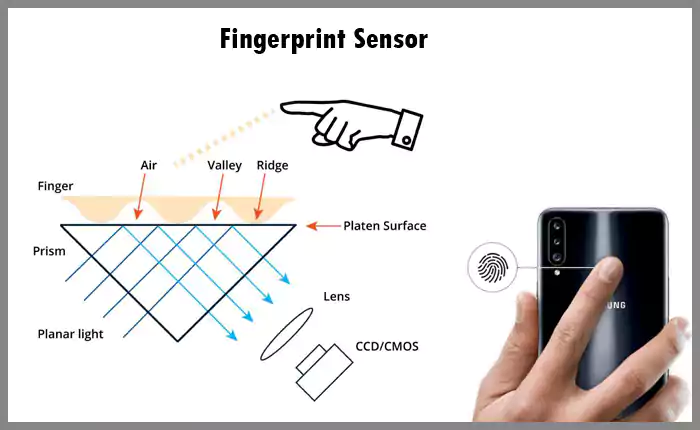
10. Heart Rate Sensor:
Found in some fitness-oriented smartphones, this sensor uses photoplethysmography to measure the user's heart rate. It is commonly used in health and fitness apps.
Advantages:
♦Monitors heart rate for health and fitness applications.
♦Provides valuable health data to users.
Disadvantages:
♦May not be as accurate as medical-grade heart rate monitoring devices.
♦Requires user cooperation (e.g., wearing the device properly).
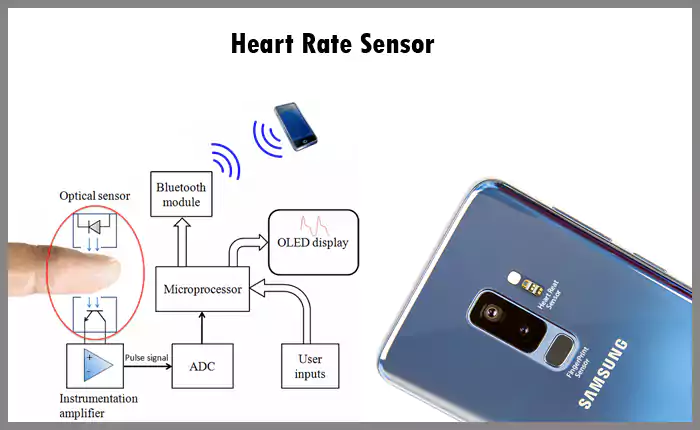
11. Ultrasonic Sensor:
Ultrasonic sensors use sound waves to measure distances to nearby objects. They are used for proximity detection and can also be employed in some gesture control applications.
Advantages
♦Ultrasonic sensors provide precise distance measurements, making them suitable for applications requiring accurate object detection and positioning.
♦They operate without physical contact with objects, which is particularly advantageous in situations where contact could be impractical or could damage the objects involved.
Disadvantages
♦Limited to Line of Sight: Ultrasonic sensors require a clear line of sight to the target object. They may not work accurately if the path between the sensor and the object is obstructed.
♦Reflection Issues: Irregular or soft surfaces may not reflect sound waves effectively, resulting in inaccurate distance measurements.
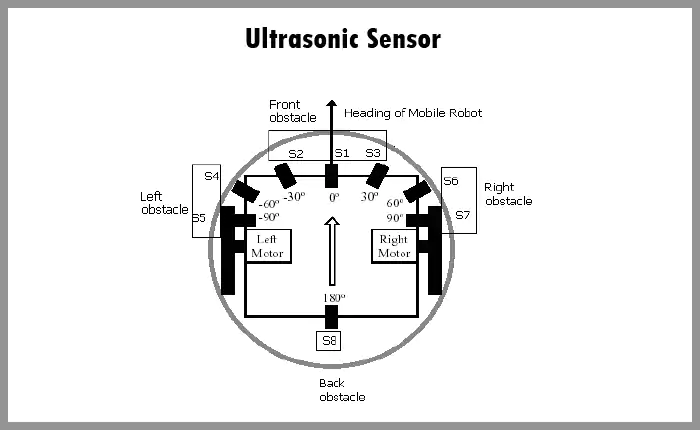
12. Hall Effect Sensor:
These sensors detect the presence and strength of magnetic fields. They are used in flip covers and cases to activate or deactivate the screen when opened or closed.
Advantages
♦Contactless operation
♦Wide range of applications
♦High sensitivity
Disadvantages
♦Limited to magnetic fields
♦Directional sensitivity
♦Cost (especially for high-precision sensors)
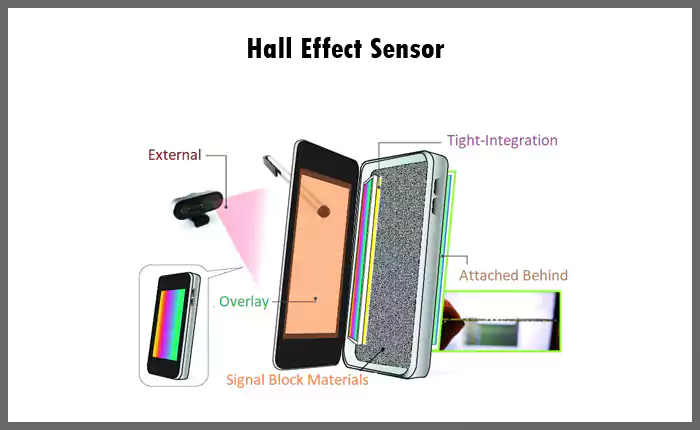
13. Temperature Sensor:
Some smartphones have temperature sensors that measure the device's internal temperature. They help monitor and prevent overheating.
Advantages:
♦Helps monitor device temperature and prevent overheating.
♦Enhances device safety and performance.
Disadvantages:
♦Typically used for internal device monitoring and not for external environmental temperature measurement.
These sensors collectively enable a wide range of applications and features, from gaming and navigation to biometric security and environmental monitoring on mobile devices. App developers utilize data from these sensors to create innovative and user-friendly experiences.
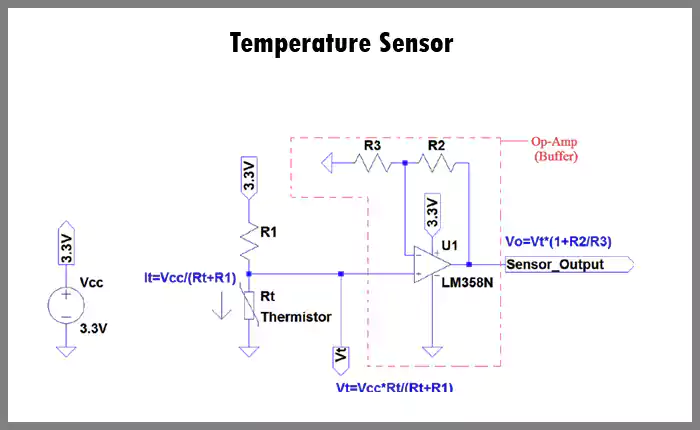
How does a smartphone sensor work?
Smartphones are equipped with a variety of sensors that work based on different principles to gather data from the device's physical environment. Here's how some common smartphone sensors work:
1. Accelerometer:
Working Principle: Accelerometers detect changes in acceleration along three axes (X, Y, and Z).
Operation: They contain tiny microstructures with a mass attached to a spring. When the phone accelerates or changes orientation, the mass moves, causing a change in capacitance or resistance, which is measured to determine acceleration.
2. Gyroscope:
Working Principle: Gyroscopes measure angular velocity and orientation changes along three axes.
Operation: They typically consist of a spinning mass, and the Coriolis effect causes the gyroscope to tilt in response to rotational motion. This tilt is measured to determine angular velocity and orientation.
3. Magnetometer (Compass):
Working Principle: Magnetometers measure the strength and direction of magnetic fields.
Operation: They detect changes in the magnetic field's strength and direction by measuring the Hall effect or other magnetic principles.
4. Proximity Sensor:
Working Principle: Proximity sensors use infrared (IR) or ultrasonic technology to detect the presence of objects near the phone.
Operation: They emit IR or ultrasonic pulses and measure the time it takes for the signal to bounce back. If an object is close, the signal return time is shorter, indicating proximity.
5. Ambient Light Sensor:
Working Principle: Ambient light sensors detect the intensity of light in the phone's surroundings.
Operation: They use photodetectors to measure the amount of light hitting the sensor. This data is then used to adjust the screen brightness automatically.
6. GPS (Global Positioning System):
Working Principle: GPS relies on signals from satellites to determine the device's precise location.
Operation: The smartphone receives signals from multiple GPS satellites and calculates its position based on the time it takes for these signals to reach the device.
7. Fingerprint Sensor (Biometric):
Working Principle: Fingerprint sensors capture and authenticate the unique patterns of a user's fingerprint.
Operation: They use capacitive or optical technology to create a detailed fingerprint image, which is then compared to stored fingerprints for authentication.
8. IR Blaster (Infrared Transmitter):
Working Principle: IR blasters emit infrared signals to control electronic devices.
Operation: The phone sends IR signals with specific codes corresponding to various remote control functions, such as changing TV channels or adjusting the volume.
9. Heart Rate Sensor:
Working Principle: Heart rate sensors use photoplethysmography to measure the user's heart rate.
Operation: They emit and detect light reflected from blood vessels in the skin, analyzing the changes in blood volume to determine the heart rate.
These sensors collectively enable a smartphone to interact with its environment and provide data to various apps and services, enhancing the user experience and enabling a wide range of functionalities. App developers use this sensor data to create innovative and user-friendly applications.
What is the sensor's advantage or disadvantage?
The advantages and disadvantages of sensors depend on various factors, including the type of sensor, its application, and the specific context in which it is used. Here, we'll discuss some general advantages and disadvantages of sensors:
Advantages of Sensors:
1. Data Collection:
Sensors enable the collection of data from the physical world, providing valuable information for analysis, control, and decision-making.
2. Automation:
Sensors play a crucial role in automation and robotics, allowing machines to respond to changes in their environment without human intervention.
3. Precision:
Many sensors offer high precision and accuracy, making them essential for scientific research, industrial processes, and medical applications.
4. Efficiency:
Sensors can help optimize energy use, resource allocation, and system performance by providing real-time data for adjustments and improvements.
5. Safety:
Sensors are used in safety-critical applications such as automotive collision avoidance systems and industrial safety mechanisms to prevent accidents.
6. Environmental Monitoring:
Sensors are vital for monitoring environmental conditions, and helping us understand climate change, pollution, and natural disasters.
7. Miniaturization:
Advances in sensor technology have led to smaller, more compact sensors, allowing for integration into portable devices like smartphones and wearables.
Disadvantages of Sensors:
1. Cost:
High-precision sensors can be expensive, which may limit their use in some applications.
2. Calibration:
Sensors may require periodic calibration to maintain accuracy, which can be labor-intensive and costly.
3. Sensitivity to Environmental Factors:
Sensors can be sensitive to temperature, humidity, and other environmental factors, leading to measurement errors.
4. Limited Range:
Some sensors have limited detection ranges, which may require multiple sensors or additional equipment for comprehensive coverage.
5. Maintenance:
Sensors in industrial or remote locations may require regular maintenance, which can be challenging and costly.
6. Complexity:
Complex sensors may require specialized knowledge for installation, operation, and troubleshooting.
7. Privacy Concerns:
Sensors, especially in consumer devices, can raise privacy concerns when used for data collection without user consent or knowledge.
8. Power Consumption:
Some sensors, when continuously active, can consume significant amounts of power, impacting the battery life of portable devices.
In summary, sensors offer numerous advantages, including data collection, automation, precision, and safety improvements. However, they also have disadvantages related to cost, calibration, sensitivity to environmental factors, and maintenance requirements. Proper selection and integration of sensors depend on the specific application and its unique requirements.
Overview
Sensors are not without challenges. They can be costly, sensitive to environmental factors, and may require calibration and maintenance. Privacy concerns may arise when sensors are used for data collection, and power consumption can be an issue, especially with battery-powered devices.
Despite these challenges, sensors continue to drive innovation across industries, offering insights, automation, and improved quality of life. As technology evolves, sensors are likely to become even more integrated into our daily lives, further shaping the way we interact with and understand the world around us.